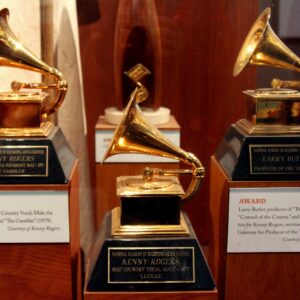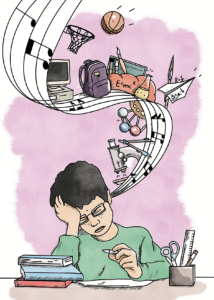This comparative study is set to point out the differences between classical and popular music and to provide the understanding of how the two industries based on the same product of culture can be so distinctly different. The outcome of the research is hopefully going to make the reader familiar with the values of the two mentioned environments. After summarising those two ways of artistic self-development, examples of cross-environmental artists are going to be brought and discussed. Thereof, a set of questions emerges: are the values of each group as noticeable in reality as they are in theory? Is it possible for the musicians to actually cross-over? Will artists associated with a certain genre of music ever have a chance to be valued in the eyes of the audiences of both environments?
In reference to the introduction, it is logical that in conjunction with the development of human brain the process of making music and the way it is understood changed as well. As Chapter Two illustrated, the musical bloom of Baroque contributed to overall change in the outlook of sound. Sheer brilliance of Western composers like Bach and their heritage initiated the process of creating a set of severe aesthetical and musical values that describe a real musician and laid foundations for the musical education. Although every following post-baroque era (being it Classical or Romantic) emerged with its own manner of interpretation of the given set of musical principles, the process of learning and consolidating the material remained fixed. With a set of notations prescribed to them by the composers of the past, the most acknowledged works of past eras were interpreted by trained in exhaustive manner artists and available to enjoy in adjusted facilities. To summarise this in short, it is safe to state that being a part of the classical music environment was an exclusive form of one’s enjoyment and was available to a limited percentage of population.
Although the standards of the higher culture musicians withstood the test of time and musical training is still practiced today, its prestige at the level of the population of the World became substantially reduced. With the justification lying in intellectual, economic and technological development, ways of making and obtaining access to any product of culture are now easy to reach and available to anyone. Improvement of communication and activity of the mass media enabled people of many cultural backgrounds to express their talents and access music overall. Creation draws on the roots of cultural tradition, but flourishes in contact with other cultures. For this reason, heritage in all its forms is preserved, enhanced and handed on to future generations as a record of human experience and aspirations, so as to foster creativity in all its diversity and to inspire genuine dialogue among cultures [48].
Because of the diversity mentioned above, today’s music industry is a subject of many artists that deviate from the standards once set in the 16th Century Europe. Modern musical environment can prosper in a way it does because of the people who constantly consume the material provided by its creators. In contrast with previous eras of music, the 21st Century listeners are part of and experience the popular culture – which definitions manage to be both precise and elusive at the same time. Setting its meaning out is not time-consuming or difficult, yet the closer scrutiny reveals that it is not common to find oneself in a complete agreement with definitions that are presented. Popular culture is the outcome of the post-war technical development. With a set of new sources of information including radio and television, music and other forms of human’s cultural activity became accessible to every person who wishes to participate in the cultural movement. Enjoyment and mass production of music as well evolved even more in the late 20th Century as a result of the digital revolution and growth of the listener’s power over authors. In the simplest words, musician’s outcome of work depends on how well it convinces the masses. A piece of sound can consist of nothing specific of value in particular – in popular industry, the appropriate in classical world musical training is not necessary. In comparison with the classical environment, popular music industry is based on a completely contrasting set of values.
To focus on the comparison itself, it is visible even from analysing various academic texts that the most of the theorists focus on classical (or serious). Although this sphere has been active for 400 years, it still needs someone to assure its significance, especially in the 21st Century.
The findings showed that modern musical environments indeed function according to the rules drawn by Adorno and his followers. What is more, the theory of the environmental autonomy[49] is in fact a perfect reflection of reality. Despite of examples of in-between collaborations, even cross-over artists have their opinion of the spheres, as seen in Milian’s interview, when he branded pop songs identical[50]. Łobaszewska’s example, on the other hand, shows how severe in words artist can be towards their musical roots.
Although Adorno assigned standardization to popular music in the 30s, the research (in this case: articles of British Journal of Music) showed that this term is now applicable to both. Disappointingly enough, serious sphere gets harmed and therefore loses its splendor. While popular still manages to flourish within its own boundaries (e.g. Adorno’s mother songs), its classical equivalent becomes, as stated in the article, reduced to an Advent Jingle[51]. And whilst standardized pop matches expectations of its diverse audience, Händel’s get stereotyped and, as the findings proved, ignored.
As far as the economic factor is concerned, the research met the author’s objectives and proved classical music as an only source of income indeed less profitable. Thus, this study showed that in some cases crossing-over in the musical field is an option for those who value their income more important than their artistic experience. As some of the interviews made clear, artists like Wodecki would never come back to original professions simply because they would lose their capital.
To stay within the topic of crossing-over, the findings presented in Chapter Three disagreed with Hargreaves and North’s theory that musicians tend to stay in the same environment for the most of their careers. In author’s opinion, reviewed profiles of artists should not be considered as an exception to a rule. Accordingly to her observations, it is a common practice among musicians. As the research showed, even highly educated opt for a change and their motives vary. Whilst it was money for Wodecki or popularity for Milian, Klocek’s example illustrated his aims of self-development and modernising educational system.
In author’s opinion, it is Caballé/Mercury example that deserves particular attention. Not only the collaboration proved to be enjoyable for listeners, but it also engaged two completely contrasting personalities. Although the articles made classical musicians look prudent towards their pop equivalents, “Barcelona” united artists coming not only from the two different spheres of music. Unusually controversial lifestyle of Mercury was an exact opposite of Caballé’s operatic career. Denying Adorno’s statements, the differences happened not to be a constraint in musical terms.
The author’s study contained examples that underpinned Berlyne’s theory that one’s past indicates musical actions of the future. As it emerged from the selected interviews, motives behind each crossing-over vary. One would think that in cases of artists coming from a musical family becoming a musician is an easiest thing to do. However, Łobaszewska or Wodecki proved that growing up in a classical environment can be a factor determining a decision of giving up the classical origins. As the examples show, the discipline and mentioned earlier environmental autonomy draw artists towards the transition.
On the other hand, the interviews showed that although this action is actually possible, it is impossible to forget completely about one’s original musical environment. Each of the acts reviewed by the author subconsciously acts as a member of both of the spheres. In the examples shown in this dissertation it is revealed that despite of being a dedicated soul performer, one can work as a music university lecturer. Similarly, being a celebrity judge will never recompense the violinist for the longing for performing solo.
As it was stated at the beginning, the purpose of this study was to demonstrate a set of differences between the approaches of classical and popular origin that arise from the works of Theodor Adorno and his followers. As it was seen in the previous sections, it is more than sound than makes one sphere so distinctively unlike the other. In other words, the initial chapters of this dissertation made the reader familiar with the nature of the two musical environments and the study managed to fulfill its aims by taking advantage of the academic statements that were later complimented by the examples contained in Chapter Three.
To summarise, this project showed that theorisations mentioned in Chapter Two indeed have a reflection in reality. However, the research proved that when it comes to describing a field so dynamic and “alive” like music industry, a theory should never be treated literally. There are always some exceptions to a rule. The research assured the author that music and its representatives are not something that should have a label put on them.
In order to enrich one’s experience within a chosen musical environment, the author would suggest further research in the shape of interviews with the insiders or a direct personal observation. The truth is that individual conclusions can be drawn from the simplest artist – listener interactions, with them being listening to music at one’s home or attending a live performance.
———————–
[48] UNESCO (2002) Universal Declaration on Cultural Diversity. In: The General Conference of UNESCO. Paris, 2 November 2001. Paris: UNESCO.
[49] Hargreaves, D. and North, A. (2008) The Social and Applied Psychology of Music.
[50] Kowalski, M. (2003) Jerzy Milian: Anatomia Powrotu. Ultramaryna [online]. 9. Available from: https://www.ultramaryna.pl/tekst.php?id=80
[51] Keegan, N. (2009) Let go of the language of the past. The Journal of Music [online]. 12. Available from: https://journalofmusic.com/article/1099
















